Table of Contents
History (Listen)
Mnemonic: SOCRATES
a. Site: Site and Site of origin of lump (in case of huge lumps)
b. Onset: Duration (from the time 1st noticed) and Mode (traumatic or spontaneous or from a pre-existing condition like scar)
c. Constitutional symptoms (Fever, weight loss, night sweats, etc.) and Consumption history (tobacco, betel nut, cigar, etc.)
d. Recurrence: Any history of recurrence with or without history of excision
e. Associated symptoms: Pain or other systemic complaints (explain further using SOCRATES)
f. Timing: Static or Progressive change in size, shape, surface or consistency
g. Effect: Activities of Daily Living (ADL), Function (Movements) or Growth plate (Deformity)
h. Secondary changes: Softening, Ulceration, Fungation, Inflammatory changes
Clinical Examination
Inspection (Look)
Mnemonic: 10 S
- Single or multiple
- Site
- Size (vertical X horizontal dimensions)
- Shape (round, oval, irregular)
- Surface (smooth/irregular, flat/raised)
- Side/edge (sessile, pedunculated)
- Shade (color)
- Skin (redness, ulcerated, pigmentation, discharge, punctum, scar, sinus, etc.)
- Surrounding area – distal and proximal (pressure effects: edema, wasting; deformity)
- Shift (change):
- Pulsation (Lump arising from artery – expansile pulsation; Lump arising superficial to artery – transmitted pulsation)
- Peristalsis (Congenital hypertrophic pyloric stenosis)
- Impulse with cough (Swellings in continuity with pleural cavity, abdominal cavity, spinal canal or cranial cavity)
- Movement with respiration (Swellings from upper abdominal viscera)
- Movement with swallowing (Swellings fixed to larynx or trachea)
- Movement with protrusion of tongue (Thyroglossal cyst)
Palpation (Feel)
Mnemonic: 6 Students and 3 Teachers around CAMPFIRE (However, always start examination with and comment on temperature 1st as subsequent palpation can give false rise in temperature.)
- 6 S to be stated again: Site, Size, Shape, Surface, Skin, Shift (including cough or cry impulse)
- Measure the size with measuring tape – vertical and horizontal dimensions
- Mention if portion of swelling disappears behind a bone
- Surface – smooth (cyst), lobular with smooth bumps (lipoma), nodular (matted lymph nodes), irregular/rough (carcinoma)
- Temperature (felt with dorsum of fingers): normal or warm (infection or well-vascularized tumor)
- Tenderness (observe patient’s facial expression; lumps from nerves can cause pins and needles)
- Transillumination or Translucency: Darken the room; Roll of X-ray or paper is held on 1 side and observed while the light is held on the other side of the swelling
- Light is transmitted (Transillumination positive): Lump contains clear fluid (water, serum, lymph, plasma or highly retractile fat)
- Consistency:
- Uniform
- Soft (like lips): Lipoma
- Cystic: Cysts and Chronic abscesses
- Firm (like nose): Fibroma
- Hard (like forehead): Yielding (Chondroma), Bony hard (Osteoma), Stony hard (Carcinoma)
- Crepitus: Gaseous swellings (Gas gangrene, surgical emphysema)
- Variable: Malignancy
- Uniform
- Attachment and Mobility: to determine plane of swelling
Move lump in two directions perpendicular to each other and repeat with the muscle contracted –- Skin (Skin swellings or subjacent swelling fixed to skin): Skin over swelling cannot be pinched
- Subcutaneous: Skin can move over lump and lump is free from underlying contracted muscle becomes more prominent when muscle is contracted
- Muscle: Lump can be moved sideways but becomes fixed with the contraction of muscle and lump diminished when muscle is contracted
- Bone: Immobile even when muscle is relaxed and cannot be moved apart from bone; may disappear with muscle contraction
- Tendon: Moves along with tendon and becomes fixed when muscle is taut against resistance
- Vessels and nerves: Fixed in longitudinal axis of structure and slight mobility in perpendicular axis
- Tear in muscle or tendon: Swelling appears only on muscle contraction
- Pulsatility: 2 fingers are placed on lump as far apart as possible – it is pulsatile if finger rises with each beat of artery
- Only raised (Transmitted pulsation): Very close to artery
- Raised and separated wide (Expansile pulsation): Arising from artery
- Fluctuation: Positive in swelling containing liquid or gas; performed in 2 planes right angle to each other
- Fixed lumps: Place 2 fingers on lump as wide apart as possible, press one pole with a finger and feel movement at the other pole
- Freely mobile lumps: Fix and feel with thumb and index finger of 1 hand at 1 pole and press on other pole with thumb and other fingers of the another hand
- Very small lump: Place and feel with 2 fingers in “peace sign” on either edges of the lump and press with index finger of another hand on 1 side of lump
- Very large swelling: More than 1 fingers can be used as “watching” and “displacing” fingers
- Irreducibility and compressibility:
- Reducible: Contents can be completely displaced into cavity (disappears) and may require cough or gravity to reappear (hernia, lymph, varix, varicocele, saphena varix, meningocele, etc.)
- Compressible: Mass decreases with pressure but reappears immediately with release (vascular malformations)
- Regional lymph nodes: Exclude regional lymphadenopathy
- Edge/margin:
- Well defined: Neoplastic and chronic inflammatory swellings
- Smooth margins (benign growths)
- Slip sign: Lipoma
- Margin yields to palpating finger: Cysts
- Irregular margins (malignant growths)
- Smooth margins (benign growths)
- Ill defined: Acute inflammatory swellings
- Well defined: Neoplastic and chronic inflammatory swellings
Percussion (Tap)
1. Tone: Resonant (gaseous content like hernia) or Dull
2. Tinel sign (positive in schwannoma)
3. Thrill
a. Fluid thrill (in swelling containing fluid): Percussion wave is palpable on 1 pole when other pole is tapped
b. Hydatid thrill: middle finger of left hand is placed on the dome of swelling and other 2 adjacent fingers are placed as far apart as possible on the swelling and the right middle finger percusses on the left middle finger and waves are felt on adjacent fingers (displacement of daughter cysts in the fluid of mother cyst)
Auscultation
For pulsatile and peristaltic lumps for bruits/murmurs and bowel sounds
Move
Range of motion (ROM) of nearby joints
Measure
To find if there is any wasting proximal or distal to swelling
Distal Neurovascular Status
To determine pressure effects
Summary of Lump Examination:
1. History: SOCRATES
2. Inspection: 10 S
3. Palpation: 6 Students and 3 Teachers around a CAMPFIRE
4. Percussion: 3 T
5. Auscultation: If pulsatile or peristaltic swelling
6. Move, Measure and DNVS
Tip: Do not forget General Examination
Reference: A Manual on Clinical Surgery 9th Edition – S.Das

He is the section editor of Orthopedics in Epomedicine. He searches for and share simpler ways to make complicated medical topics simple. He also loves writing poetry, listening and playing music.

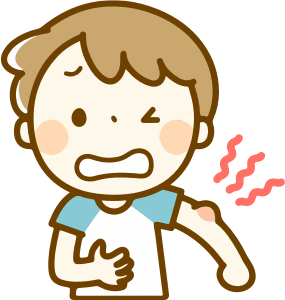
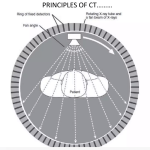
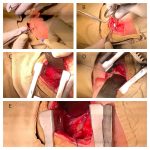
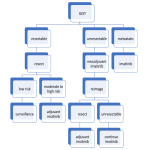
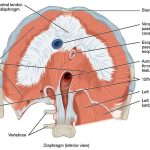
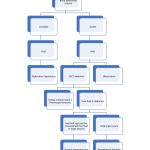
My God.
This is one of the most detailed, simple, yet easy-to-remember works I have seen on examination of swellings and lumps. This is nothing short of a masterpiece sir. Thanks a billion fold.